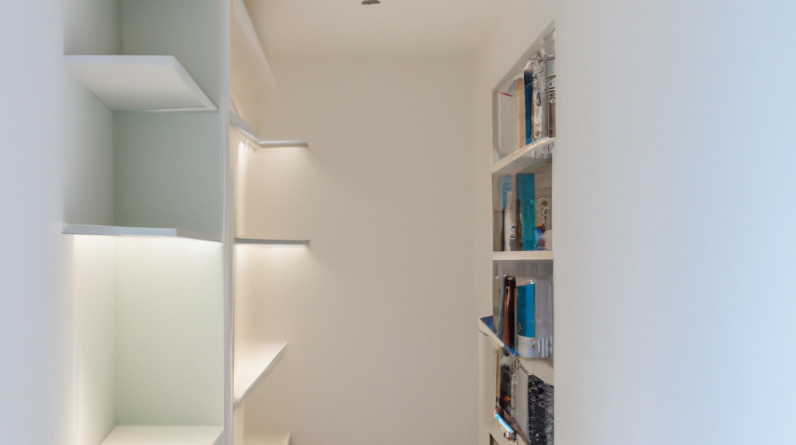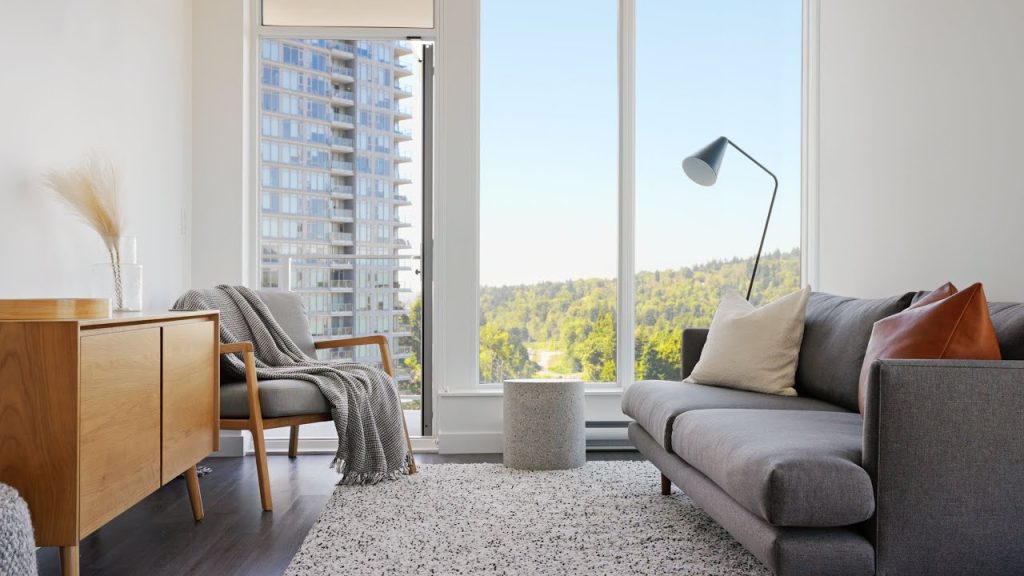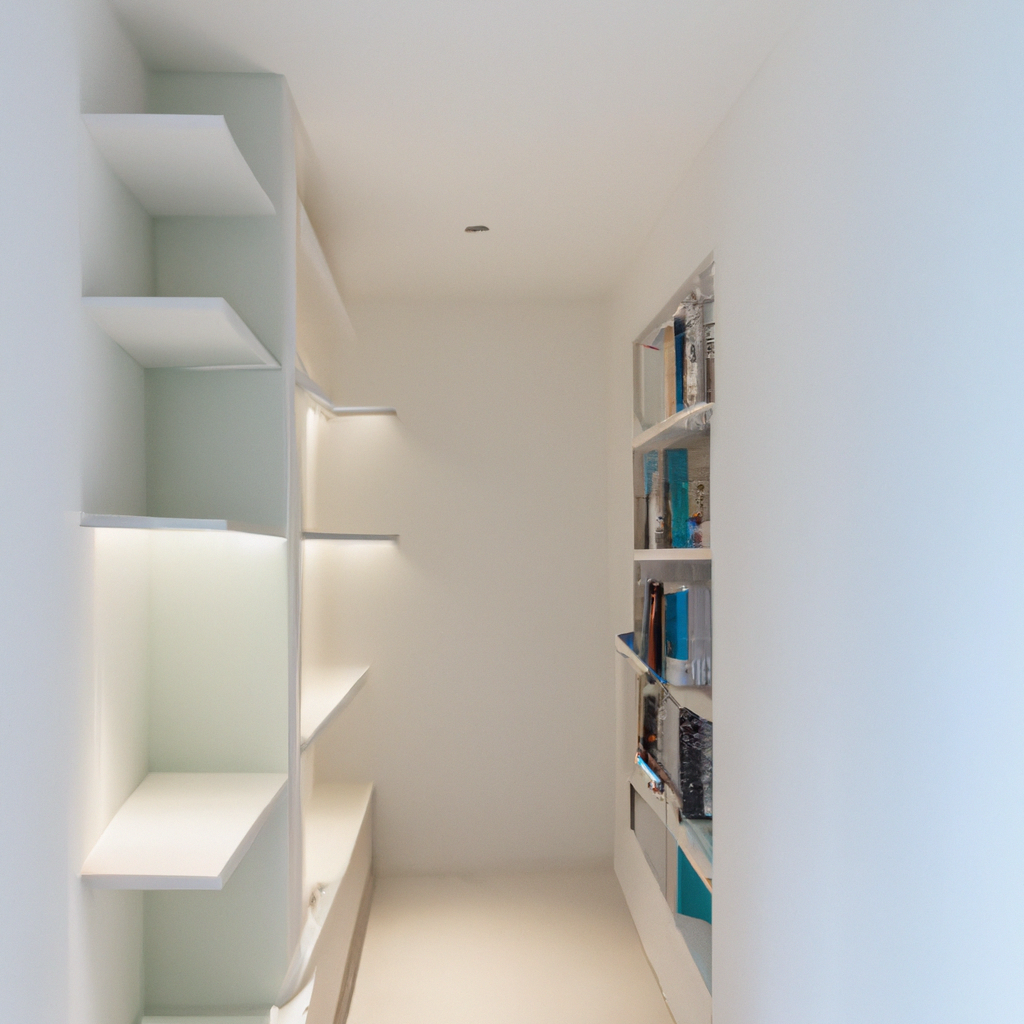
Welcome to the “Architect’s Minimalist Japandi Apartment Tour”! In this video by Daniel Titchener, you’ll get a virtual tour of a stunning apartment that combines Japanese and Scandinavian design styles. The apartment, measuring 630 square feet, features two bedrooms, a bathroom, and an open-plan living area and kitchen. When the architect first got the keys to the apartment, it was completely empty, but with careful planning and a mix of natural materials and cozy elements, they were able to create a space that is both minimalist and warm. From the entrance with a large mirrored closet to the bedroom with contrasting textures, every corner of this apartment exudes tranquility and functionality. Join Daniel as he takes you on a captivating journey through this beautifully designed space.

Table of Contents
Architect’s Minimalist Japandi Apartment Tour
Introduction
Welcome to the Architect’s Minimalist Japandi Apartment Tour! In this article, we will take you on a comprehensive tour of a stunning Japandi-style apartment designed by an architect. Japandi is a fusion of Japanese and Scandinavian design elements which creates a unique and minimalist aesthetic. Join us as we explore each area of this beautiful apartment and learn how the architect utilized space, incorporated natural materials, and achieved a cozy yet functional living environment.
Entryway
Features and Design
The entryway of this apartment is compact yet carefully designed to maximize functionality and reflect light. It features a small entrance, but with a large double-sliding mirrored wardrobe in the corner, there is plenty of storage space for a vacuum cleaner, shoes, and other items. The wardrobe also includes shelves and a hanging rail for clothes, cleverly transformed into our own coat rack with the use of S hooks. Additionally, there is an outlet here due to the electrical panel, which we found to be a convenient spot for drying our hair. However, the real reason we want to show you this area is because the mirrored doors make this narrow space feel much larger by reflecting light in this windowless, dark area. At the same time, it also provides an initial glimpse into our favorite area of the home.
Utilizing Space
The entryway of this apartment demonstrates the architect’s ingenuity in utilizing every inch of space. With the compact size and limited square footage, the architect made sure to make the most of the entryway by incorporating storage solutions and functional elements. The double-sliding mirrored wardrobe not only provides ample storage but also acts as a space-enhancing element, making the area feel more spacious. The addition of shelves and a hanging rail allows for organized storage of clothing, while the S hooks transform the rail into a personalized coat rack. The inclusion of an outlet near the electrical panel offers convenience for hair drying. By carefully considering the functionality and efficient use of space, the architect has created a well-designed entryway that is both practical and visually appealing.
Reflecting Light
In a small, windowless space like the entryway, it is important to find ways to reflect light and create the illusion of a larger area. The double-sliding mirrored wardrobe in the corner plays a crucial role in achieving this. The mirrored doors not only serve as a functional element but also act as a design feature that reflects light, making the entryway feel brighter and more open. By strategically placing the mirrored doors in this narrow space, the architect has created a visually pleasing and spacious atmosphere.
Living Room and Kitchen
Japandi Design Style
The living room and kitchen areas of this apartment showcase the Japandi design style, a unique fusion of Japanese and Scandinavian elements. This design style combines the minimalist and natural aesthetics of Japanese design with the cozy and functional characteristics of Scandinavian design. The result is a harmonious blend of simplicity, warmth, and functionality. The architect has carefully chosen furniture and decor pieces that embody the essence of Japandi design, creating a serene and inviting living space.
Combining Japanese and Scandinavian Elements
In the living room and kitchen areas, the architect has seamlessly integrated Japanese and Scandinavian design elements. Japanese design is known for its minimalism, clean lines, and focus on natural materials. Scandinavian design, on the other hand, embraces warmth, comfort, and functionality. By combining these two styles, the architect has achieved a balanced and harmonious living environment. The furniture, decor, and materials used in these areas reflect the simplicity and elegance of Japanese design, while the addition of textures and warm elements adds a touch of Scandinavian coziness.
Choosing Furniture
The choice of furniture in the living room and kitchen further enhances the Japandi design style. The architect has carefully selected pieces that are both functional and visually appealing. For the living room, a comfortable sofa from Article is paired with a Denman lounge chair made of oak wood, creating a cozy seating area that is perfect for relaxing and enjoying a morning coffee. The soft and plush shag rug adds texture and comfort, while a large throw blanket complements the lounge chair. The selection of furniture is a testament to the architect’s attention to detail and commitment to creating a comfortable and inviting space.
Adding Texture and Warmth
To achieve a truly Japandi aesthetic, the architect has incorporated elements that add texture and warmth to the living room and kitchen areas. One such element is the terrazzo Selena stool, which features a mix of materials and textures. Its natural and durable qualities, combined with its warm and attractive design, perfectly blend in with the overall aesthetic. Additionally, a high-pile patterned rug and a large fabric throw on the lounge chair add both visual and tactile texture. These carefully chosen elements help create a cozy and inviting atmosphere in the living room and kitchen, transforming the space into a place of relaxation and comfort.
Bedroom
Minimalist Decor
The bedroom in this Japandi apartment embodies minimalist decor. The architect has embraced the less-is-more philosophy, keeping the room clutter-free and focusing on simplicity and functionality. The use of a white and beige color palette, along with glossy textures provided by the materials used, creates a clean and calming atmosphere. The minimalist decor allows for a peaceful and restful environment, perfect for unwinding and relaxing.
Natural and Durable Materials
The use of natural and durable materials is a key aspect of the Japandi design style and is evident in the bedroom of this apartment. The architect has opted for a headboard made of oak wood and a high-pile carpet, which adds warmth and comfort to the space. These materials not only contribute to the aesthetic appeal of the room but also ensure longevity and sustainability. By selecting materials that age beautifully and withstand daily use, the architect has created a bedroom that is both visually pleasing and practical.
Creating a Cozy and Functional Space
The architect has successfully created a cozy and functional space in the bedroom of this Japandi apartment. The inclusion of a minimal cable management system allows for an incredibly clean setup. This design choice not only enhances the overall aesthetic but also improves functionality by keeping cables organized and out of sight. The addition of a mobile oak wood sideboard and a leather pouf adds warmth, comfort, and an element of functionality to the room. By carefully curating the decor and layout, the architect has struck a balance between minimalism and functionality, resulting in a bedroom that is both calming and practical.

Bathroom
Clean and Organized
Although small, this bathroom is meticulously organized and perfectly embodies the Japandi design style. The architect has paid attention to every detail to ensure that the space remains clean and clutter-free. The limited visual elements in the bathroom create a sense of serenity and simplicity. With the inclusion of storage solutions such as drawers under the sink, the bathroom remains tidy and functional.
Highlighting Functionality
In line with the Japandi design style, the architect has emphasized functionality in the bathroom. The choice of fixtures, storage solutions, and layout all contribute to the overall functionality of the space. The minimalist design ensures that every element in the bathroom serves a purpose and adds to the overall aesthetic. By highlighting functionality, the architect has created a bathroom that is not only visually appealing but also practical and efficient.
Conclusion
Achieving balance in small spaces can be a challenge, but the architect of this minimalist Japandi apartment has successfully created a harmonious living environment that is both aesthetically pleasing and functional. The careful selection of furniture, materials, and decor elements reflects the essence of Japandi design, creating a serene and inviting atmosphere. By utilizing space effectively and incorporating natural and durable materials, the architect has achieved a minimalist yet warm and cozy ambiance. The thoughtful design choices in each area of the apartment demonstrate the importance of balance and attention to detail. Thanks to Article for sponsoring this video and providing quality furniture that perfectly complements the Japandi design style. We hope this apartment tour has inspired you to consider the beauty and functionality of Japandi design in your own space.


